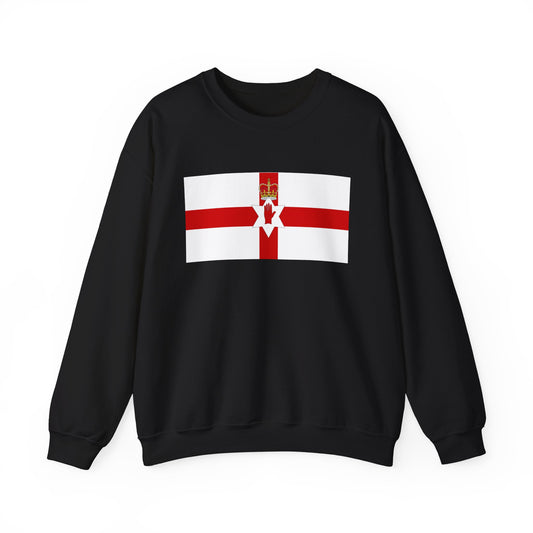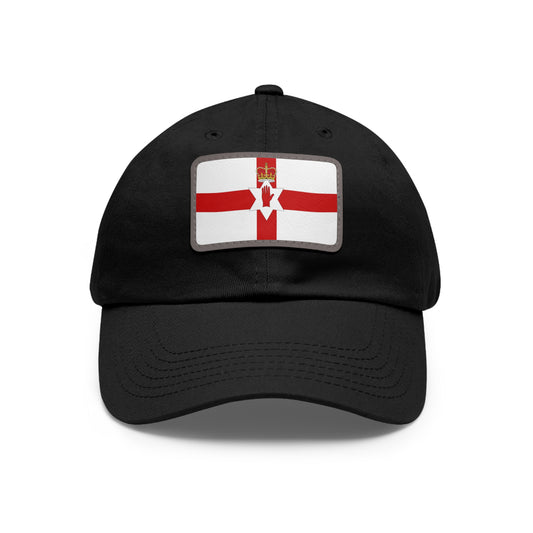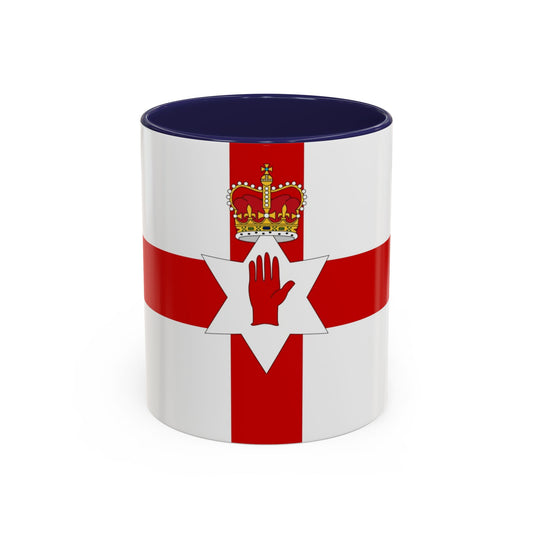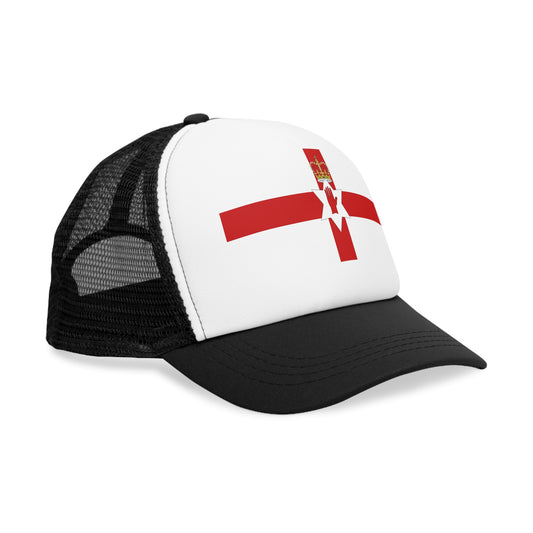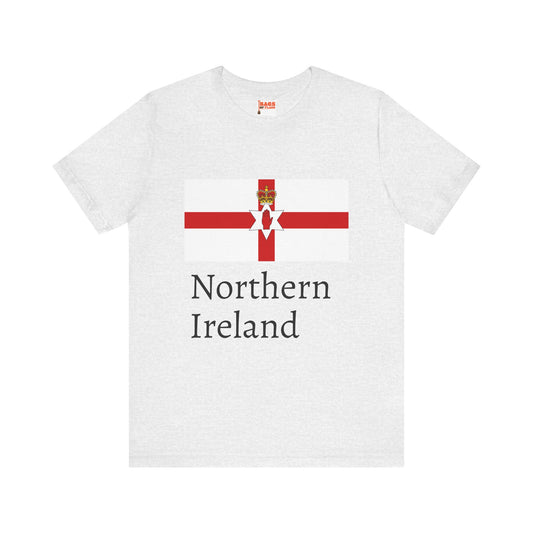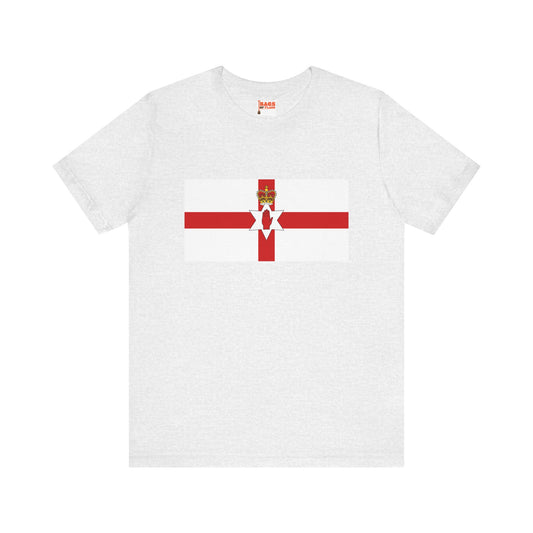-
Northern Ireland Sweatshirt
Regular price $34.15 USDRegular priceUnit price / per -
Northern Ireland Flag Sweatshirt
Regular price $34.15 USDRegular priceUnit price / per -
Northern Ireland Pillow
Regular price $22.65 USDRegular priceUnit price / per -
Northern Ireland Backpack
Regular price $59.79 USDRegular priceUnit price / per -
Northern Ireland Leather Patch Hat
Regular price $18.85 USDRegular priceUnit price / per -
Northern Ireland Mug
Regular price $11.65 USDRegular priceUnit price / per -
Northern Ireland Trucker Cap
Regular price $14.90 USDRegular priceUnit price / per -
Northern Ireland Hoodies
Regular price $34.40 USDRegular priceUnit price / per -
Northern Ireland T-shirts
Regular price $22.79 USDRegular priceUnit price / per -
Northern Ireland Flag Hoodies
Regular price $34.40 USDRegular priceUnit price / per -
Northern Ireland Flag on T-shirt
Regular price $22.79 USDRegular priceUnit price / per
Collection: Northern Ireland
The Northern Ireland flag, also known as the flag of Northern Ireland, is a symbol of pride and identity for the people of this region. With a unique design and colors, the flag holds historical significance and continues to play a role in modern-day events and ceremonies.
Overview of the Northern Ireland Flag

The Northern Ireland flag showcases a striking design characterized by a red cross against a white field, with a central star capturing attention. This red cross, known as Saint Patrick's Cross, stands as a vibrant emblem of the patron saint of Ireland. The white backdrop of the flag not only enhances the prominence of the Red Cross but also symbolizes a foundation of peace and unity amidst the diverse communities of Northern Ireland. At the heart of the flag, the star holds significant value as it reflects the aspiration for unity among all region inhabitants, regardless of their political or religious affiliations. This distinctive flag, through its simplicity and meaningful symbols, effectively communicates the spirit and heritage of Northern Ireland.
Historical Context of the Northern Ireland Flag
The journey of the Northern Ireland flag began before its official adoption in 1953. Its roots can be traced to the early 20th century, specifically during a tumultuous period known as the Home Rule Crisis, when it was utilized by the Ulster Volunteer Force to signify their resolve against Irish self-government, reflecting the deep-seated political and social unrest of the time. This era laid the foundational use of the flag as a symbol of unionism and allegiance to the British Crown, which became more pronounced during the latter half of the century, especially amidst the complexities of the Troubles—a period marked by violent conflict between nationalists/republicans who were primarily Catholic and wished for Northern Ireland to reunite with Ireland, and unionists/loyalists, mainly Protestant, who wanted it to remain part of the United Kingdom.
Throughout these years, the flag's prominence surged as it was frequently hoisted in unionist areas and used in public demonstrations, reinforcing its association with British identity in Northern Ireland. However, this also meant the flag became a point of contention, embodying the divide between the communities and contributing to its complex legacy. Despite the flag's official status being discontinued in 1972 when the Northern Ireland government was dissolved, its historical imprint continues to influence its perception and use in the region.
Symbolism Behind the Flag
The symbolic features of the Northern Ireland flag are imbued with profound symbolism that transcends its simple design. At the forefront, the red cross of Saint Patrick is symbolic of Ireland's patron saint, serving as a beacon of Christian faith and Irish heritage. This iconic cross, set against the pure white background, conveys a powerful message of hope and unity, aiming to bridge the historical divide between the communities within Northern Ireland. The stark contrast between the red and the white represents strength and purity, suggesting a foundation upon which peace and reconciliation can be built.
Central to the flag's design is the inclusion of a star, a symbol with a dual significance. It represents the six counties that makeup Northern Ireland, acknowledging the region's distinct political and geographical identity. On the other hand, it reflects a collective aspiration towards unity and harmony among its people. This star, positioned at the heart of the flag, acts as a reminder of the shared desire among Northern Ireland's inhabitants to overcome division and strife, aiming for a future where differences are acknowledged but no longer serve as barriers to coexistence. Through these symbols, the flag of Northern Ireland narrates a story of resilience, aspiration, and the ongoing journey towards peace.
Current Relevance of the Flag
In contemporary society, the flag of Northern Ireland takes on a multifaceted role, serving as a prominent emblem at events that showcase national pride, including sports matches and cultural festivals. It also appears in military ceremonies, honoring the region's service members. The presence of the flag at such events underlines its continued importance in expressing the distinct identity and heritage of Northern Ireland on both a local and international stage. Nonetheless, the emblem remains at the center of ongoing debates, reflecting the complex sentiments that surround it. For some, it symbolizes a cherished connection to the UK.
In contrast, for others, it evokes memories of historical conflicts, leading to discussions about its appropriateness in representing a society striving for inclusivity and peace. This dichotomy underscores the ongoing dialogue about the possibility of creating a new flag that could more broadly encompass the diversity and shared future aspirations of Northern Ireland's people, highlighting the evolving nature of symbols in reflecting a community's identity and values.
Additional Facts About the Northern Ireland Flag
The nuances of the Northern Ireland flag extend beyond its design to include a set of protocols that dictate its display and handling, reflecting the deep respect and significance attributed to this emblem. For instance, when the flag is flown, it must be treated with the utmost respect, ensuring it never comes into contact with the ground as a sign of honor and dignity. Furthermore, displaying the flag upside down is considered improper, symbolizing distress or an extreme faux pas in flag etiquette.
Interestingly, despite its discontinuation as the official government flag in 1972, the Northern Ireland flag has remained intact. Instead, it has found a place alongside the Union Jack and the flag of Ireland during various official and ceremonial occasions, indicating its ongoing relevance in representing Northern Ireland's identity. Flying the Northern Ireland flag in conjunction with other national flags showcases a complex identity and history that continues to be recognized and celebrated in different contexts.
Another intriguing aspect is the flag's role in discussions about national symbols and their ability to represent a diverse society. The ongoing debate around the flag underscores a broader conversation about identity, belonging, and the future of Northern Ireland's symbolic landscape. As discussions progress about potentially introducing a new flag that could unify various communities, it highlights the dynamic nature of symbols and their ability to evolve in response to changing societal values and aspirations.




